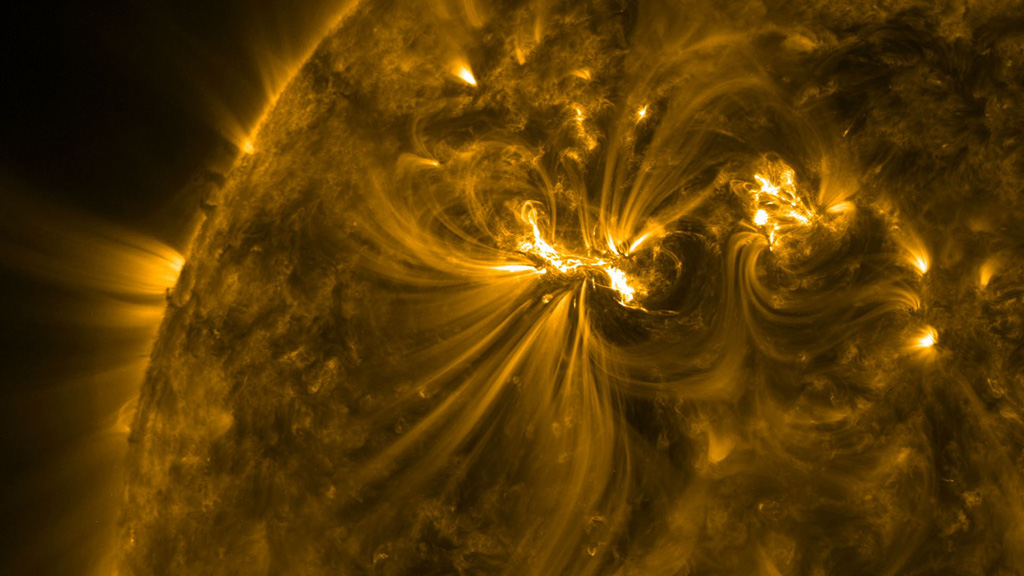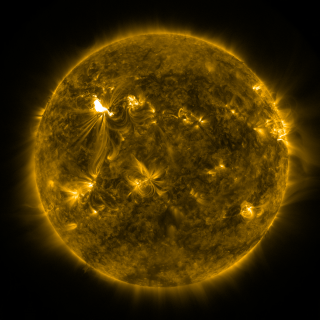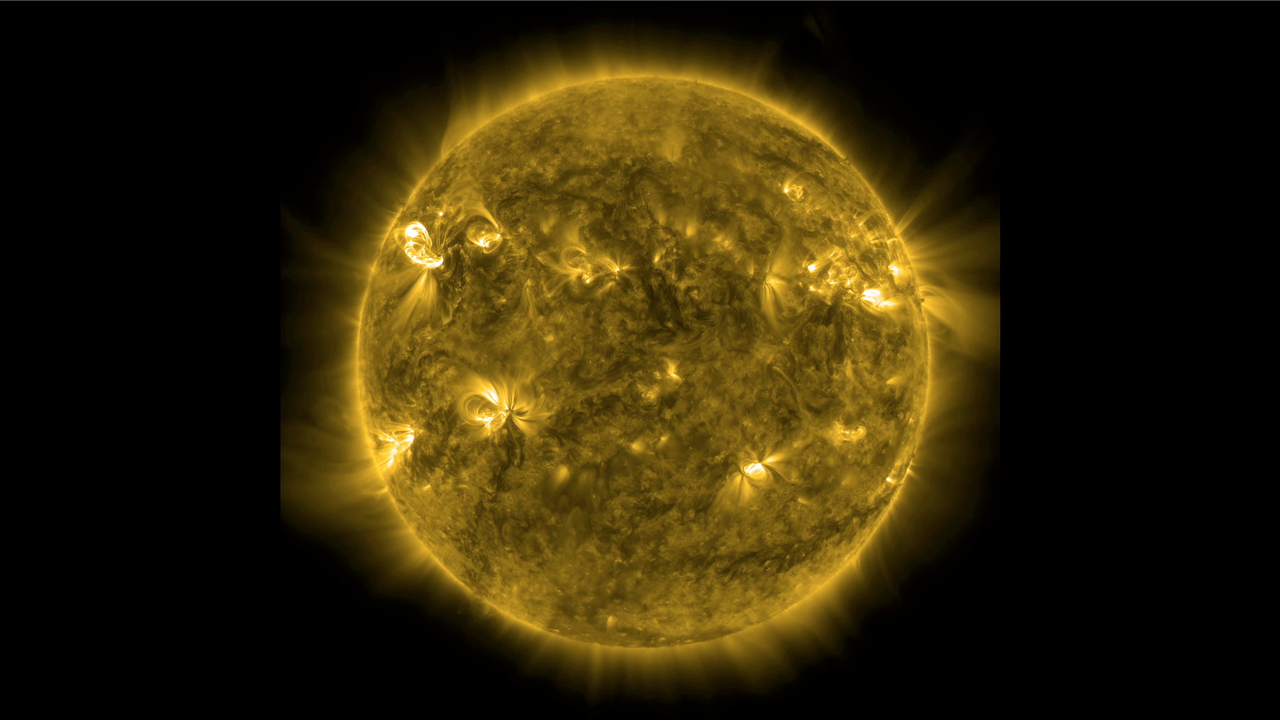HD Close up of March 6th X5.4 Flare
The sun erupted with one of the largest solar flares of this solar cycle on March 6, 2012 at 7PM ET. ?This flare was categorized as an X5.4, making it the second largest flare — after an X6.9 on August 9, 2011 — since the sun's activity segued into a period of relatively low activity called solar minimum in early 2007. The current increase in the number of X-class flares is part of the sun's normal 11-year solar cycle, during which activity on the sun ramps up to solar maximum, which is expected to peak in late 2013.
About an hour later, at 8:14 PM ET, March 6, the same region let loose an X1.3 class flare. ?An X1 is 5 times smaller than an X5 flare.
These X-class flares erupted from an active region named AR 1429 that rotated into view on March 2. ?Prior to this, the region had already produced numerous M-class and one X-class flare. ?The region continues to rotate across the front of the sun, so the March 6 flare was more Earthward facing than the previous ones. ?It triggered a temporary radio blackout on the sunlit side of Earth that interfered with radio navigation and short wave radio.
In association with these flares, the sun also expelled two significant coronal mass ejections (CMEs), which are traveling faster than 600 miles a second and may arrive at Earth in the next few days. ?In the meantime, the CME associated with the X-class flare from March 4 has dumped solar particles and magnetic fields into Earth's atmosphere and distorted Earth's magnetic fields, causing a moderate geomagnetic storm, rated a G2 on a scale from G1 to G5. ?Such storms happen when the magnetic fields around Earth rapidly change strength and shape. ?A moderate storm usually causes aurora and may interfere with high frequency radio transmission near the poles. ?This storm is already dwindling, but the Earth may experience another enhancement if the most recent CMEs are directed toward and impact Earth.
In addition, last night's flares have sent solar particles into Earth's atmosphere, producing a moderate solar energetic particle event, also called a solar radiation storm. These particles have been detected by NASA's SOHO and STEREO spacecraft, and NOAA's GOES spacecraft. ?At the time of writing, this storm is rated an S3 on a scale that goes up to S5. ?Such storms can interfere with high frequency radio communication.
Besides the August 2011 X-class flare, the last time the sun sent out flares of this magnitude was in 2006. ?There was an X6.5 on December 6, 2006 and an X9.0 on December 5, 2006. Like the most recent events, those two flares erupted from the same region on the sun, which is a common occurrence.
This movie of the March 6, 2012 X5.4 flare was captured by the Solar Dynamics Observatory (SDO) in the 171 angstrom wavelength. One of the most dramatic features is the way the entire surface of the sun seems to ripple with the force of the eruption. This movement comes from something called EIT waves — because they were first discovered with the Extreme ultraviolet Imaging Telescope (EIT) on the Solar Heliospheric Observatory. Since SDO captures images every 12 seconds, it has been able to map the full evolution of these waves and confirm that they can travel across the full breadth of the sun. The waves move at over a million miles per hour, zipping from one side of the sun to the other in about an hour. The movie shows two distinct waves. The first seems to spread in all directions; the second is narrower, moving toward the southeast. Such waves are associated with, and perhaps trigger, fast coronal mass ejections, so it is likely that each one is connected to one of the two CMEs that erupted on March 6.
Credit: NASA/SDO
Version of Massive Flare Gets HD Close Up without labels. Footage and music only
For complete transcript, click here.
SOHO LASCO view of flare and CME

171 angstrom ultraviolet light still of flare.

171 angstrom ultraviolet light still of flare, cropped.

131 angstrom ultraviolet light still of flare.

131 angstrom ultraviolet light still of flare, cropped.

171 angstrom ultraviolet light still of flare.

171 angstrom ultraviolet light still of flare, cropped.

An aurora on March 8, 2012 shimmering over snow-covered mountains in Faskrudsfjordur, Iceland.
Credit: Jónína Óskarsdóttir
Credits
Please give credit for this item to:
NASA/Goddard Space Flight Center
-
Animators
- Tom Bridgman (Global Science and Technology, Inc.)
- Scott Wiessinger (USRA)
-
Video editor
- Scott Wiessinger (USRA)
-
Producers
- Scott Wiessinger (USRA)
- Genna Duberstein (USRA)
-
Writer
- Karen Fox (ADNET Systems, Inc.)
Release date
This page was originally published on Wednesday, March 7, 2012.
This page was last updated on Wednesday, May 3, 2023 at 1:53 PM EDT.
Missions
This page is related to the following missions:Series
This page can be found in the following series:Tapes
The media on this page originally appeared on the following tapes:-
March 6 Flare
(ID: 2012029)
Wednesday, March 7, 2012 at 5:00AM
Produced by - Robert Crippen (NASA)




